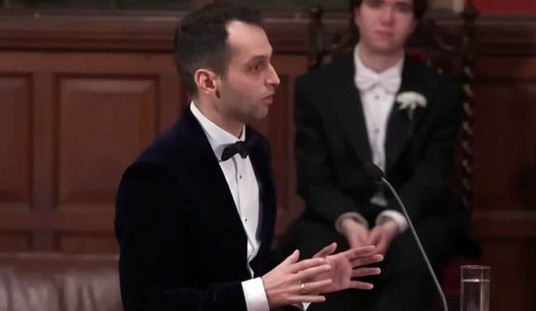Liz Bierendy, a 17-year-old artist who attends Pilgrim High School in Warwick, R.I., has had to defend her artistic vision for a mural to cover a wall of the high school. The work, designed to show the progression of a boy from childhood to adulthood, ends with a depiction of a man standing hand-in-hand with a woman and child. The man and woman wear wedding bands.
Critics said the mural might not represent the life experiences of many of the students at Pilgrim High School — so Bierendy should have to change it. Fortunately, the Warwick School Superintended inserted himself into the controversy and insisted that Bierendy should be allowed to finish the mural as she designed it.
My first thought when I read this story was of the elephant-dung-dusted image of the Virgin Mary that once was brought to New York’s Brooklyn Museum of Art. When Christians complained, the common refrain was, “What’s the matter? It’s just art.” That’s what I want to ask Bierendy’s critics now: “What’s the matter? It’s just art.”
Very few artistic works are so grand and sweeping as to reflect the whole of human experience. It’s an expert artistic strategy to attempt to reflect that part of reality with which the artist is most familiar. So it was that Jane Austen wrote of the love lives of the landed class in the eighteenth and nineteenth century English countryside. So it was that Louisa May Alcott wrote a story of four “little women” closely patterned after herself and her sisters. Often, artists’ most imaginative attempts at the construction or reconstruction of a world they’ve never actually experienced themselves fall flat. The Twilight series should be evidence enough of that. That Bierendy was accurately reflecting some sliver of human experience should be enough to satisfy any pro-art critics.
But another layer to this story exists. The reaction to Bierendy’s mural underscores society’s alarming tendency to adjust standards to fit the way we live, rather than adjust the way we live to fit standards. (Incidentally, I’d note that many of these standards are rooted not just in societal mores, but in natural law. We’re not actually able to “change” them — just to deny or ignore them at our own peril. But that’s another post!) While we should be realistic about human nature and certainly shouldn’t base governmental policies on idealistic assumptions, we should nevertheless work to renew the culture such that it brews better and better behavior in each successive generation.
No family is perfect, but the facts still support the idea that the so-called “traditional” or “nuclear” family is the best context in which to bring up children. Consider just a few statistics: Adolescents in single-parent homes are more likely to be sexually active than their peers in two-parent homes. Boys whose fathers aren’t involved in their lives are more likely to exhibit aggression and antisocial behavior than boys whose fathers are involved. Girls whose fathers are frequently absent are more likely to become pregnant as teenagers than girls whose fathers are consistently present. Meanwhile, teens from intact families are less likely to initiate drug and alcohol use, have lower smoking and drinking rates than their peers and are less likely to abuse drugs. If, then, we consider it to be better for kids not to smoke, drink and have sex as teenagers, then it is better for kids to grow up in an intact family. That’s not a judgment; it’s just a description.
The need for art that depicts the traditional progression to adulthood is greater than ever. Too few examples exist in real life these days. Art can fill the gap and show millennials who seem determined to delay responsibility for as long as possible that something else is possible. Whereas a blog post (yes, like this one) that lectures kids my age to consider marriage and parenthood as valid priorities is easy to tune out, art might actually invite them to consider again the advantages to the traditional “transition to adulthood.” Anecdotal evidence suggests that kids aren’t actually happier remaining kids when their brains and bodies are long past the point of developing. They might not know it, but they want to be adults who not only take full responsibility for themselves but are at least capable of taking responsibility for a child, too. A depiction of a smiling, hand-holding family (however cheesy that might seem) might help kids themselves to become aware of that fact.









Join the conversation as a VIP Member